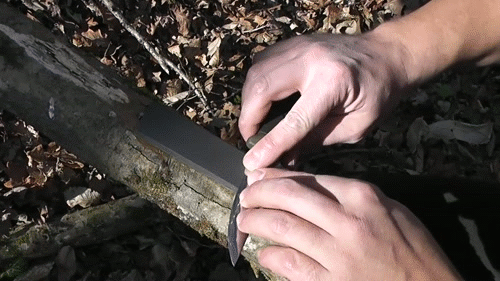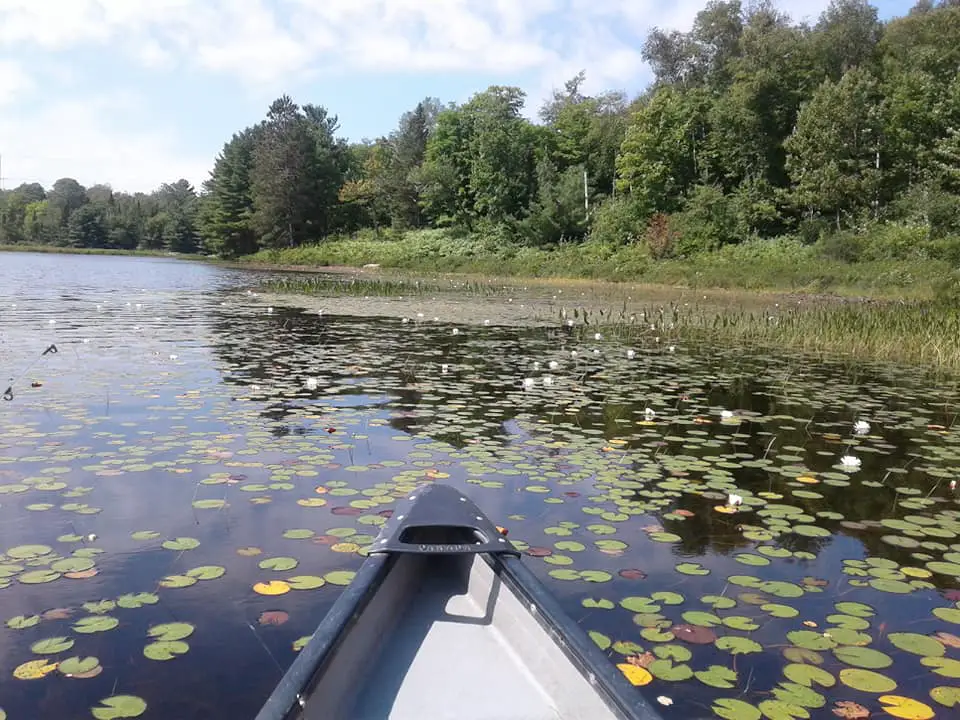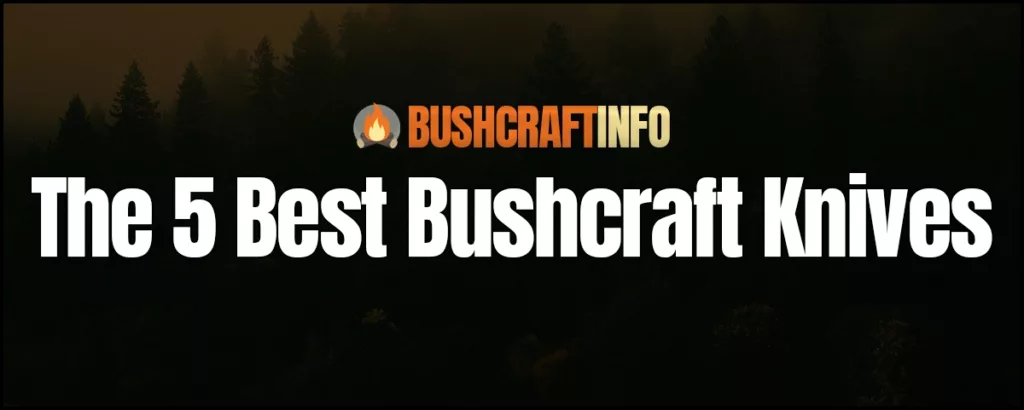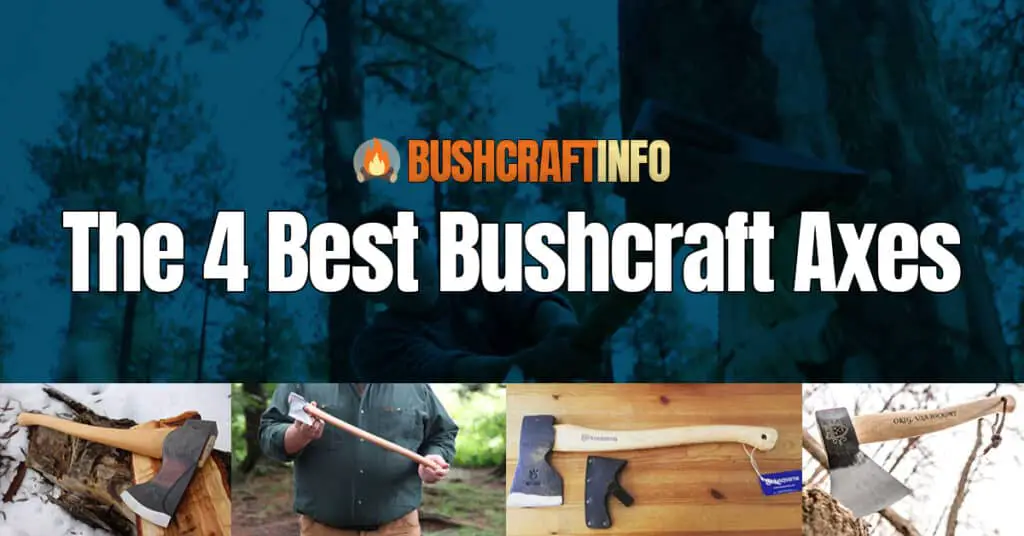I’ve said it over and over again you guys are probably tired of hearing it but there is no bushcraft tool more important than your bushcraft knife. It is extremely important that you practice proper bushcraft knife maintenance to keep your blade in proper condition and ready to work.
Proper bushcraft knife maintenance includes:
- Keeping your blade sharp, a dull knife is not good for much of anything and can actually cause damage to your blade over time.
- Making sure your knife is cleaned and dry before putting it away to avoid corrosion.
- If your knife is high carbon steel, keeping it oiled is essential for the longevity of the blade and avoiding rust.
- Avoid digging your knife into the soil, sand, or any other forms of earth. This can cause damage and ruin your blade.
These are the four major things you need to consider when you own an expensive, quality knife that you want to last you for a while. A lot of people tend to ignore these 4 key rules for maintaining a quality bushcraft knife and end up having to purchase a new knife. We want to avoid that! So let’s get into a little more detail.
How to Keep Your Bushcraft Knife Sharp
I have keeping your blade sharp as #1 on the list of bushcraft knife maintenance tips for a good reason, it’s simply the most important thing you can do to maintain a quality blade. If you don’t keep a sharp edge on your blade it can become harder to sharpen over time and even cause damage!
Not all of you reading this will be familiar with sharpening your new knife, but have no fear that is what I am here to help you with. If you already know how to keep your knife sharp please skip to the next section.
How to Sharpen a Knife at Home
The way I recommend to sharpen your bushcraft knife at home is by using a simple sharpening stone. There are many different sharpening stones available but the one I use is the Smith’s 6-Inch Diamond Tri-Hone Sharpener as it is fairly cheap and works wonders.
If you already own a sharpening stone or are going with a different option, the steps to sharpening your knife at home are much the same. Find a flat surface to place your sharpening stone on and apply a generous amount of oil to it.
Next, you want to be sure you know the bevel of your blade, most bushcraft knives will come with a flat bevel also know as a scandi grind. In this case, you just want to place your blade flat on the stone then proceed to tilt your blade towards the cutting edge until you find that your bevel and the stone are flush.
You want to start with the knife close to your body, cutting edge faced away from you, and the knife tilted to the correct bevel angle. Move the knife across the stone while applying a decent amount of pressure from your fingers to the edge of the knife. Make sure you are moving the knife horizontally across the stone as you are moving it forwards to ensure you are sharpening the entire length of the blade. If you succeeded, you will notice metal has been removed from the bevel of the blade, if you don’t see that simply try again with an adjusted angle.
Now you need to sharpen the opposite bevel, to do this face the cutting edge of the blade towards you and start at the further end of the sharpening stone using your thumbs to apply pressure to the bevel as you bring it back towards you. You should now have a fairly sharp blade on both bevels.
If you are more of a visual learner, check out this video below:
How to Field Sharpen a Knife
The more your blade dulls, the harder it becomes to get that fine edge back over time. This is why it’s important to have the capability to sharpen a knife in the wild.
One of the quickest and most efficient ways to keep your knife sharp while out in the bush is by using what’s referred to as a pocket sharpening stone. My favorite is the Fallkniven DC4 because it easily fits in my pocket, half the time I forget it’s there! You can also use it dry, which is a big bonus in my books.
Now, you will be sharpening your knife out in the bush much like you would at home. Place the blade of your knife on the sharpening stone so the bevel is against the stone nice and flat. Starting from the bottom of the sharpening stone move the blade up starting at the shaft of the blade and ending at the tip of the blade at the top of the sharpening stone. Then, do the same but using the opposite side of the blade starting from the top this time. It should be one fluid motion as pictured below:

Make sure you switch sides to ensure an equally sharpened knife!
Keep Your Knife Clean & Dry
Many people don’t bother wiping off their knives after use, this is a big pet peeve of mine. When you put your knife back in its sheath while wet or before you’ve whipped it off after a task that has gunked your blade up you are ruining your blade. This especially applies for when you get back from your trips, you always want to be sure you clean and dry your blade, as well as your sheath to avoid seeing a rust-colored blade the next time you pull it out!
Oil Your Bushcraft Knife
It is important that every now and then you apply oil to your blade, especially if your blade is made of carbon steel which most bushcraft knives tend to be these days. Now there is no specific bushcraft knife oil you need to buy, any mineral oil will do the trick. I use 100% Natural Food Grade Knife and Blade Maintenance Oil because it’s nontoxic and I use my knife for food prep a lot when out in the bush. It takes no time at all to oil up your blade and you only need to do it once a month, or whenever you plan on storing your knife away for an extended period of time.
Avoid Making Contact with Soil While Using Your Knife
The coarseness of soil will wear down the blade of your bushcraft knife over time, hidden rocks beneath the soil can also take a chip out of your blade. It’s best to avoid cutting downwards as much as possible or, if unavoidable to always use a log as a barrier of sorts that will prevent you from accidentally driving your knife into the soil which will inevitably damage it.
Please do not dig with your knife unless absolutely necessary, sure you can and it will work but it will also ruin the blade. This is why companies make light and portable shovels perfect for all uses in bushcraft! Save your blade and in turn, your wallet!
Final Thoughts
Bushcraft Knife Maintenance is essential, it also gives you something to do! No matter how much you spent on your knives, you always want to make sure you are practicing these tips to get the most life out of them!
Was this post helpful?

Hey I’m Josh! I have been practicing Bushcraft for a little over 6 years now! I Started this website to review awesome bushcraft gear that I love as well as share information I have learned along the way!


